- Author: Cathy
What is the best wood for laser engraving and cutting? You may have this question before starting your laser cut wood projects, and indeed, suitable wood can have a significant impact on your results. There are many factors to consider when choosing wood for laser, and selecting the right one can lead to better effects and higher quality in your custom wood processing.
A handy list of laser woods
| Wood | Color | Features |
|---|---|---|
| Oak | Light brown | Durable, prominent grain |
| Maple | Pale cream | Hard, fine grain, takes detail well |
| Cherry | Reddish-brown | Darkens beautifully with age |
| Walnut | Dark brown | Rich color, strong contrast when engraved |
| Birch | Pale yellow | Smooth surface, good for detailed work |
| Pine | Light yellow | Soft, easy to engrave, budget-friendly |
| Cedar | Reddish-brown | Aromatic, naturally resistant to decay |
| Beech | Pale cream | Hard, tight grain, good for precision cuts |
| Poplar | Pale green/brown | Affordable, easy to work with |
| Basswood | Very pale | Extremely soft, ideal for intricate designs |
| Bamboo | Light yellow | Sustainable, consistent density |
| Teak | Golden brown | Naturally oily, may create more smoke and residue |
| Ebony | Black | Very dense, high-contrast engravings |
| Balsa | Very pale | Light and easy to cut, but may result in a higher risk of burning |
| Rosewood | Dark brown/purple | Dense, takes fine detail |
| Ash | Light brown | Strong, flexible, distinct grain pattern |
1. Common wood for laser engraving and cutting
Plywood
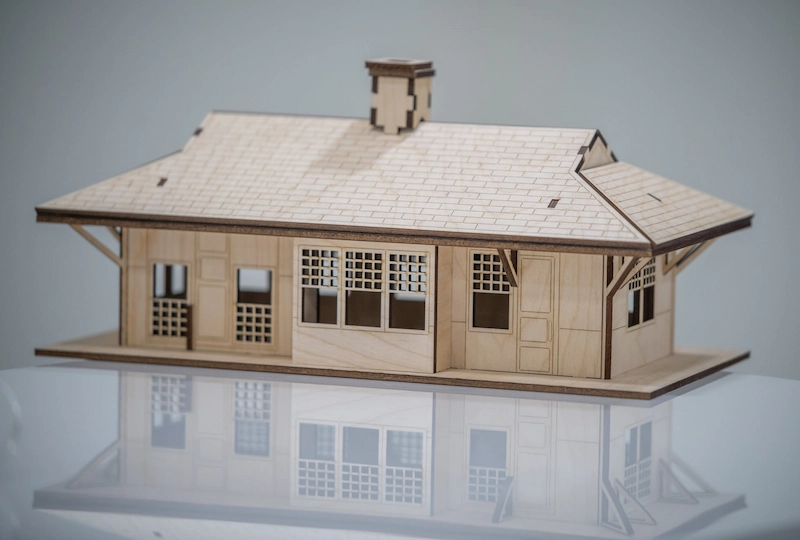
Birch plywood – model
Solid wood

olive wood – kitchenware
MDF
Medium-Density Fiberboard (MDF) is an engineered wood product that offers exceptional consistency for laser processing. Its uniform density and smooth surface result in clean, precise cuts and engravings with minimal burning or charring. MDF is particularly well-suited for intricate designs and text, as it doesn’t have a grain pattern that might interfere with fine details. It’s cost-effective and available in various thicknesses, making it popular for mass-produced items, prototypes, and architectural models.
However, MDF can produce more dust during cutting compared to solid wood or plywood, and it doesn’t offer the natural wood grain aesthetics. It’s also important to note that MDF may contain formaldehyde, so proper ventilation is crucial when laser processing this material.
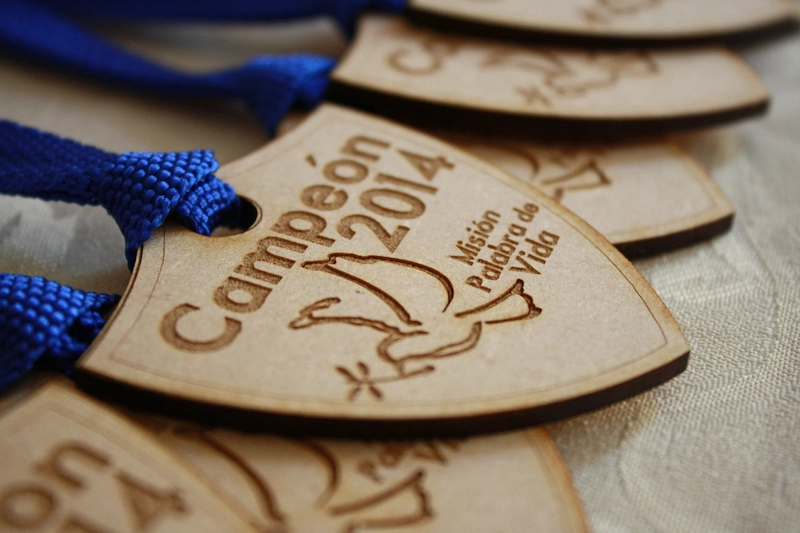
mdf – medal
2. Other woods you might want to try
Bamboo
Bamboo is a popular wood for laser engraving and cutting due to its unique characteristics. As a sustainable and fast-growing material, it’s an eco-friendly option for various projects. Its uniform density and grain structure result in consistent laser engraving and cutting outcomes, and its durability and resistance to warping make it suitable for a wide range of applications. The material’s low resin content leads to cleaner cuts and less residue buildup on machines.
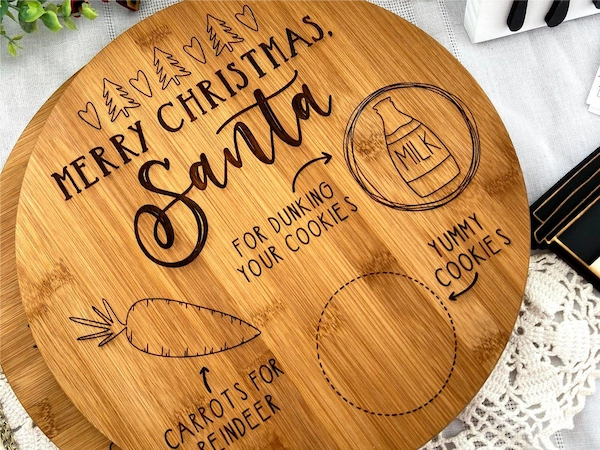
Basswood
It’s soft, light-colored wood with a fine, even grain that produces clean, crisp engravings. Its low density allows for easy cutting, making it ideal for intricate designs. Basswood burns consistently, resulting in good contrast. It’s particularly suitable for beginners due to its forgiving nature and affordable price.
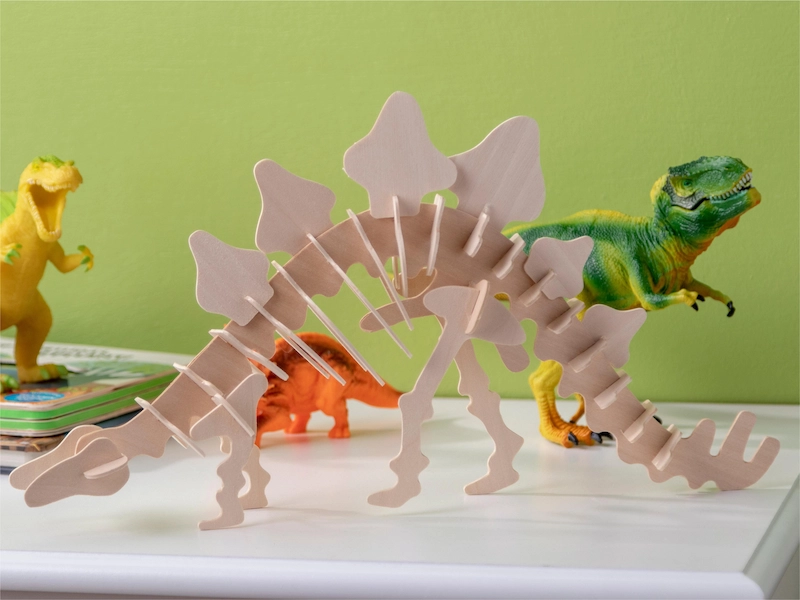
Cherry wood

3. Hardwood VS. Softwood
Hardwood
Softwood
Key Differences
- Density
- Grain pattern
- Growth rate
- Laser processing characteristics
- Price
Is pine wood good for laser engraving?
Pine wood is indeed a good choice for laser engraving, particularly for beginners or those working on a budget.
Its softness makes it easy to engrave with less laser power, while its light color provides excellent contrast for engraved designs. Pine is widely available and affordable, making it ideal for practice or large-scale projects. The distinct grain pattern can add visual interest to engravings, though it may occasionally affect consistency.

4. How to choose wood for laser engraving and cutting?
Project requirements
Wood types
Wood characteristics
Grain and texture: Wood with distinct stripes has character but can obscure the clarity of laser engraving. Tighter, more consistent grain patterns generally result in cleaner cuts and engravings.
Resin content: The level of resin content affects the darkness of the burn color, with lower resin content resulting in lighter burn colors.
Moisture content: Lower moisture content in wood improves laser performance.
Knots: Uneven knots add character but can affect the depth and presentation of laser processing. Flat-surfaced wood presents clearer engraving results than knotty lumber and is also easier to cut.
Machine compatibility
Cost and availability
Safety considerations
How to prep wood for laser engraving?
- Surface Preparation
- Cleaning
Remove all dust and debris on the wood blanks for laser engraving thoroughly. Use a tack cloth or compressed air to ensure no particles remain, as these can affect the engraving quality.
- Masking
- Enhancing Grain
5. Where to buy wood for laser cutting and engraving?
Local Hardware Stores
Specialty Woodworking Shops
Online Retailers
Craft Stores
Lumber Yards
Local Woodworkers or Sawmills
- Tags
#wood for laser engraving, #wood for laser cutting, #laser woods, #laser engraving wood near me, #laser engraver for wood


.png) International
International
 United States
United States
 Brasil
Brasil
 Canada
Canada
 Costa Rica
Costa Rica
 Česká
Česká
 Ελλάδα
Ελλάδα
 Polska
Polska
 Ireland
Ireland
 Portugal
Portugal
 Lietuva
Lietuva
 Россия
Россия Deutschland
Deutschland
 Britain
Britain
 Україна
Україна
 France
France
 Sverige
Sverige
 Italia
Italia
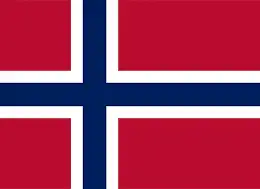 Norway
Norway
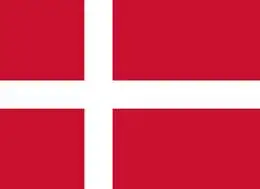 Denmark
Denmark
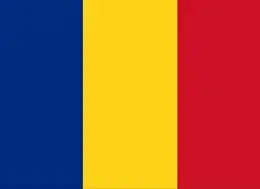 Romania
Romania
 한국
한국
 中国
中国
 ประเทศไทย
ประเทศไทย
 中国香港
中国香港
 Israel
Israel
 中國臺灣
中國臺灣
 India
India
 پاکستان
پاکستان
 پශ්රී ලංකා
پශ්රී ලංකා
 Australia
Australia
 New Zealand
New Zealand
 South Africa
South Africa